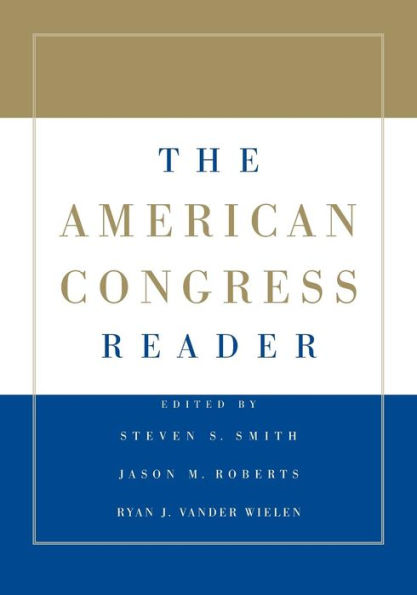Table of Contents
Part I. The American Congress: Modern Trends: 1. What is wrong with the American political system? John Hibbing and Elizabeth Theiss-Morse; 2. A reassessment of who's to blame David W. Brady and Sean M. Theriault; 3. Between the campaigns James A. Stimson; Part II. Representation and Lawmaking in Congress: The Constitutional and Historical Context: 4. US Constitution, Articles I, II, III, and Amendments; 5. The Federalist, Nos. 10 and 51; 6. US House members in their constituencies Richard A. Fenno, Jr.; 7. Collective vs dyadic representation in Congress Robert Weissberg; Part III. Congressional Elections and Policy Alignments: 8. Elbridge Gerry's Salamander excerpt Gary W. Cox and Jonathan N. Katz; 9. Strategic politicians and the dynamics of US House elections, 1946–86 Gary C. Jacobson; 10. Congress: the electoral connection David R. Mayhew; Part IV. Members, Goals, Resources, and Strategies: 11. Senate representation and coalition building in distributive politics Frances E. Lee; 12. Risk-bearing and progressive ambition David W. Rohde; 13. Issue Politics in Congress excerpts Tracy Sulkin; Part V. Parties and Leaders: 14. Institutional context and leadership style Joseph Cooper and David W. Brady; 15. Setting the agenda Gary W. Cox and Mathew D. McCubbins; 16. Party influences in Congress Steven S. Smith; Part VI. The Standing Committees: 17. Distributive and partisan issues in agriculture policy in the 104th House Mark S. Hurwitz, Roger J. Moiles and David W. Rohde; 18. Principals, goals, dimensionality, and Congressional committees Forrest Maltzman and Steven S. Smith; 19. Nonlegislative hearings and policy change in Congress Jeffrey C. Talbert, Bryan D. Jones and Frank R. Baumgartner; Part VII. The Rules of the Legislative Game: 20. Sample of a special rule; 21. Sample of a unanimous consent agreement; 22. On the effects of legislative rules Gary W. Cox; 23. The partisan basis of procedural choice Sarah A. Binder; 24. The evolution of agenda-setting institutions in congress Jason M. Roberts and Steven S. Smith; Part VIII. The Floor and Voting: 25. Greasing the Wheels excerpt Diana Evans; 26. Models of legislative voting John W. Kingdon; 27. Pivotal Politics excerpt Keith Krebhiel; Part IX. Congress and the President: 28. Presidential veto messages; 29. Presidential signing statement; 30. Veto bargaining Charles Cameron; 31. The dynamics of legislative gridlock, 1947–96 Sarah A. Binder; 32. The Politics of Shared Power excerpt Louis Fisher; 33. Conscience of a conservative Jeffrey Rosen; Part X. Congress and the Courts: 34. Senate voting on Supreme Court nominees Charles M. Cameron, Albert D. Cover and Jeffrey A. Segal; 35. From Abe Fortas to Zoe Baird Glen S. Krutz, Richard Fleisher and Jon R. Bond; Part XI. Congress, Lobbyists, and Interest Groups: 36. Buying time Richard L. Hall and Frank W. Wayman; 37. Legislative Lobbying excerpt John Wright; Part XII. Congress and Budget Politics: 38. Appropriations in the republican era Diana Evans; 39. Pet projects veil is only partly lifted John Solomon and Jeffrey H. Birnbaum; Part XIII. Further Readings on Congressional Politics: 40. Introduction to the spatial theory of legislating Steven S. Smith, Jason M. Roberts and Ryan J. Vander Wielen; 41. The institutional foundations of committee power Kenneth A. Shepsle and Barry R. Weingast; 42. The return to equilibrium Gerald S. Strom.







